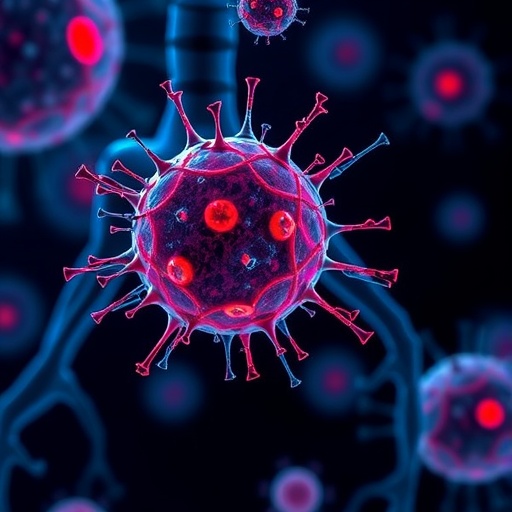In a groundbreaking study published in Nature Biomedical Engineering, researchers led by Kai Chen, along with collaborators Mark Griffin and David Henn, have shed light on the pivotal role of circulating mechanoresponsive monocytes and macrophages in combatting fibrosis. This innovative research could reshape how we approach the management of fibrotic diseases, conditions characterized by excessive connective tissue accumulation that often leads to organ dysfunction. The inherent implications for understanding and manipulating immune responses in order to mitigate fibrosis pave the way for novel therapeutic interventions that could ultimately save lives.
Fibrosis, a major complication arising from chronic inflammation, is increasingly recognized as a significant health challenge affecting various organs, including the lungs, liver, and heart. Current treatments often fall short of efficacy, highlighting the urgent need for new strategies to combat this insidious process. The study by Chen and colleagues addresses a critical gap in our understanding of how the immune system’s response contributes not only to the progression of fibrosis but also to the potential for therapeutic intervention.
In their research, the team investigated the mechanical properties of circulating monocytes and macrophages—immune cells that play a crucial role in the body’s response to injury and inflammation. By employing sophisticated imaging and biomechanical assessment techniques, the researchers characterized the mechanoresponsive capabilities of these cells, noting that their ability to respond to mechanical stimuli may be a key factor in their role in fibrosis development.
The researchers discovered that monocytes, which circulate in the bloodstream, can differentiate into macrophages that possess distinct properties when exposed to varying mechanical environments. This differentiation is critical as it allows cells to adapt and respond appropriately to different tissue contexts. By understanding these cellular responses, the researchers hope to harness this knowledge to develop strategies that can modulate immune responses and thereby reduce the progression of fibrosis.
In addition to elucidating the mechanobiology of monocytes and macrophages, the study also examined the signaling pathways activated in response to mechanical cues. The research revealed that specific mechanotransduction pathways are pivotal in regulating the behavior of these immune cells. This insight offers potential therapeutic targets, where fine-tuning these pathways could improve outcomes for patients suffering from fibrotic diseases.
The team also explored immune cell infiltration into fibrotic tissue, providing a more intricate picture of how monocytes and macrophages contribute to tissue remodeling and fibrosis. Dynamics such as the rate of cell migration, the expression of fibrotic markers, and the production of inflammatory cytokines were meticulously analyzed. The findings suggest that by targeting these cellular mechanisms, it might be possible to not only slow down fibrosis but potentially reverse it.
Importantly, this research underscores the potential use of mechanoresponsive monocytes and macrophages as biomarkers for fibrotic disease. Detecting changes in these cell populations could serve as a diagnostic tool that aids in early identification and monitoring of fibrotic disorders. This discovery could pave the way for personalized medicine approaches that better suit the individual needs of patients, enhancing treatment efficacy.
Moreover, the implications of this study extend beyond understanding fibrosis alone. The insights gained concerning the mechanobiological behavior of immune cells could also inform research into other diseases, such as cancer, where the tumor microenvironment and its mechanical characteristics play significant roles in disease progression. Therefore, the relevance of this research could resonate across multiple fields of biomedical research.
As the global medical community grapples with the challenges posed by fibrotic diseases, the study by Chen et al. injects fresh optimism into the field. The promise of targeting circulating mechanoresponsive monocytes and macrophages to mitigate fibrosis introduces a paradigm shift in how we conceptualize immune responses in relation to fibrosis. The potential for new therapeutics arising from this research fuels hope for millions affected by fibrosis worldwide.
The road ahead, however, is not without challenges. Further studies will be necessary to translate the findings from the laboratory setting into clinico-practical applications. Comprehensive clinical trials, evaluating the safety and effectiveness of any emerging therapies targeting these immune cells, will be critical. Additionally, understanding the broader implications of manipulating the immune system must be a priority, given the complex interplay between various cell types in fibrotic environments.
In summary, the research conducted by Chen and his team marks a significant milestone in the quest to untangle the complex web of fibrosis within the body. By focusing on the mechanobiological characteristics of circulating monocytes and macrophages, the researchers have opened new avenues of exploration that may lead to effective treatments for fibrotic diseases. This work not only contributes valuable knowledge to the scientific community but also illuminates a path forward for patients enduring the burdens of organ fibrosis.
As the findings circulate through the scientific community, it is anticipated that they will instigate discussions about novel treatment strategies that utilize the unique properties of mechanoresponsive immune cells. The potential impact of this research is substantial, and ongoing studies could illuminate further applications not only in fibrosis but in a range of pathologies where mechanical signaling plays a role.
This pioneering approach signifies a leap toward better understanding both the mechanisms behind fibrosis and the immune response, ultimately transitioning towards more effective and targeted interventions. The journey from research to practical application may take time, but the foundation laid by Chen and his colleagues is likely to influence scientific inquiry and therapeutic strategies for years to come.
As researchers continue to explore the influential roles of immune cells in fibrosis, the integration of biomechanical insights into traditional immunology could lead to revolutionary advancements in treatment protocols. Ultimately, this study not only addresses the pressing issue of fibrosis but also sets the stage for a new era in immunotherapy that could redefine how we approach chronic inflammatory diseases.
Subject of Research: The role of circulating mechanoresponsive monocytes and macrophages in fibrosis reduction.
Article Title: Targeting circulating mechanoresponsive monocytes and macrophages to reduce fibrosis.
Article References:
Chen, K., Griffin, M., Henn, D. et al. Targeting circulating mechanoresponsive monocytes and macrophages to reduce fibrosis.
Nat. Biomed. Eng (2025). https://doi.org/10.1038/s41551-025-01479-5
Image Credits: AI Generated
DOI: 10.1038/s41551-025-01479-5
Keywords: Fibrosis, mechanoresponsive monocytes, macrophages, immune response, therapeutic intervention.
Tags: chronic inflammation and fibrosiscirculating monocytes and macrophagesfibrosis treatment strategieshealth challenges of fibrosisimmune response in fibrotic diseasesinnovative therapeutic interventionsmechanical properties of immune cellsmechanoresponsive immune cellsNature Biomedical Engineering studynovel approaches to combat fibrosisorgan dysfunction and fibrosistargeting immune cells for fibrosis



